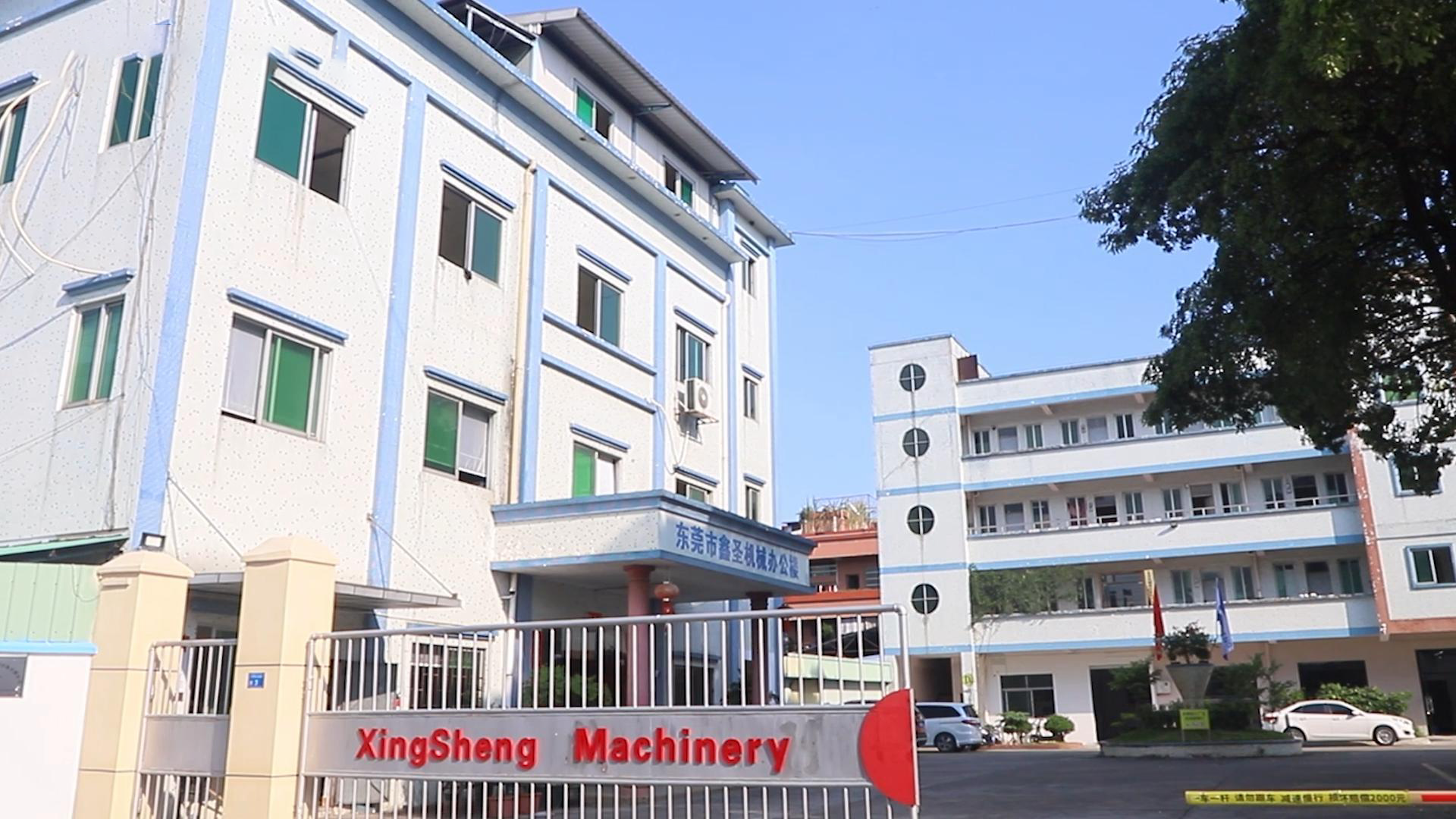كيف تُحسّن آلات صنع مقابض الدلاء من الكفاءة الإنتاجية من خلال الأتمتة
تبسيط سير العمل من خلال إنتاج المقابض الآلي
لقد تغير إنتاج مقابض الدلاء الحديثة تمامًا مع إدخال آلات تقضي على تقنيات القولبة والمحاذاة اليدوية التقليدية. بدلًا من ذلك، تعتمد هذه الآلات على أذرع روبوتية جنبًا إلى جنب مع أنظمة بثق دقيقة لإتمام المهام بشكل أسرع. الفرق كبير جدًا عند النظر إلى أزمنة الدورة. نحن نتحدث عن تقليل زمن المعالجة بنسبة تقارب 42٪ مقارنة بما كان ممكنًا باستخدام الطرق شبه التلقائية. وهذا يعني أنه يمكن للمصانع الآن إنتاج ما بين 1800 و2400 مقبضًا كل ساعة. ولا ننسَ أيضًا مراقبة الجودة. تحافظ هذه الآلات على التحكم في درجة الحرارة في القوالب بشكل فعلي وفي الوقت الحقيقي بدقة تتراوح بين زائد أو ناقص نصف درجة مئوية. ما الذي يعنيه ذلك عمليًا؟ جودة منتج متسقة بين الدفعات دون الحاجة إلى شخص يقف ويشرف على كل شيء طوال اليوم.
خفض تكاليف العمالة والأخطاء البشرية في تصنيع الدلاء
أدى التحول إلى الأنظمة الآلية لتصنيع الدلاء البلاستيكية إلى تقليل كبير في الحاجة إلى العمال وكذلك في عدد المنتجات المعيبة. وفقًا للتقارير الصناعية، انخفض الوقت اللازم لإنتاج 1000 وحدة بشكل كبير من حوالي 8.2 ساعة إلى 1.5 ساعة فقط، ما يعني توفيرًا يقارب 80٪ في تكاليف العمالة. وفيما يتعلق بالعيوب، فإن المصنّعين يلاحظون انخفاضها من نحو 3 عيوب لكل 100 قطعة إلى أقل من نصف بالمئة، أي تحسين يقترب من 90٪! كما تنخفض استهلاك الطاقة من 18 كيلوواط في الساعة إلى 12 كيلوواط فقط لنفس الكمية من الدلاء. ما يميز هذه الأنظمة هو أجهزة المسح الضوئي ثلاثية الأبعاد بالليزر المدمجة التي يمكنها اكتشاف شقوق صغيرة جدًا بعرض لا يتجاوز 0.2 مليمتر، وهي تفصيلة لا يمكن للعين البشرية رصدها أثناء الفحوصات العادية.
مكاسب إنتاجية قابلة للقياس: رؤى بيانات من خطوط الإنتاج الآلية
يكشف تحليل 18 منشأة إنتاجية عن فوائد واضحة للتشغيل الآلي: حققت 92٪ عائد استثمار خلال 14 شهرًا، وارتفعت السعة الإنتاجية بنسبة 68٪ دون توسيع المساحة، كما انخفض هدر المواد الخام بنسبة 31٪ بفضل القوالب التنبؤية المدعومة بالذكاء الاصطناعي التي تُحسّن دورة الضغط والتبريد.
موازنة الاستثمار الأولي المرتفع مع العائد على الاستثمار على المدى الطويل
استثمار في آلات المقابض الأوتوماتيكية يترافق مع تكاليف أولية تتراوح بين حوالي 120 ألف دولار و250 ألف دولار، لكن معظم الشركات تجد أن هذه التكاليف تستحق عندما تنظُر إلى النتيجة النهائية. تنخفض تكلفة الوحدة بشكل كبير من حوالي 3.2 سنت إلى 1.7 سنت فقط عند الانتقال من العمل اليدوي. عادةً، تسترد الشركات أموالها خلال ما يقارب السنتين ونصف، مع تحقيق عوائد سنوية تصل إلى نحو 19٪ بفضل القدرة على تشغيل العمليات دون انقطاع يوماً بعد يوم. ما يثير الحماسة حقاً لدى المصنّعين اليوم هو مدى تطور هذه الآلات الجديدة لتصبح وحدات معيارية. بدلاً من الحاجة إلى إعادة هيكلة كاملة، يمكن للشركات ترقية المعدات جزءاً جزءاً حسب الحاجة، مع الحفاظ على استمرارية تشغيل خطوط الإنتاج بسلاسة طوال العملية.
التقدم التكنولوجي في آلات صناعة مقابض الدلاء والتكامل الذكي
من الأنظمة اليدوية إلى الأنظمة الذكية: تطور في إنتاج الدلاء البلاستيكية
لقد قطعت الأتمتة الذكية شوطًا طويلاً منذ أيام العمليات اليدوية، حيث خفضت أوقات الإعداد بنسبة تقارب 53 في المئة، وحسّنت الدقة الأبعادية لتصل إلى نطاق تسامح لا يتجاوز 0.2 مم، وفقًا لما ذكرته مجلة Plastics Today العام الماضي. في الوقت الحالي، تحتوي معظم أنظمة التصنيع الحديثة على مستشعرات إنترنت الأشياء (IoT) مدمجة مباشرة. وتقوم هذه المستشعرات بمراقبة مستمرة لعوامل مثل لزوجة المواد ومدى سرعة تصلبها أثناء المعالجة. وهذا يحل محل جميع تلك التعديلات اليدوية المرهقة التي كان لا بد من إجرائها في العصر الذي كانت تُستخدم فيه المعدات في أوائل العقد الأول من القرن الحادي والعشرين. والفارق بين النظامين فارق كبير جدًا. وبفضل هذه الأنظمة المتقدمة التي تتولى إدارة العمليات، بات بإمكان المصانع الآن إنتاج ما يقارب 1,200 مقبض كل ساعة دون التفريط بأي جودة أو دقة.
الميزات الرئيسية لآلات تصنيع مقابض الدلاء الحديثة
تأتي معدات التصنيع الحديثة الآن مع بعض الترقيات المثيرة للإعجاب. أولاً، هناك قوالب يمكنها المعايرة الذاتية بناءً على كيفية انكماش المواد أثناء الإنتاج. ثم لدينا أنظمة استرداد الطاقة التي تستعيد حوالي 85٪ من القوة الهيدروليكية التي تُفقد عادةً في العملية. وأخيرًا، هناك نظام تحكم في الجودة يعتمد على الرؤية الحاسوبية لاكتشاف الشقوق الصغيرة التي يقل حجمها عن نصف ملليمتر. وعندما تعمل جميع هذه التحسينات التقنية معًا، شهدت المصانع في أمريكا الشمالية انخفاضًا بنسبة 19٪ تقريبًا في هدر المواد منذ أوائل عام 2021. بالإضافة إلى ذلك، يمكن للمصنّعين الآن التحول بين تصاميم المقابض المختلفة خلال اليوم نفسه، مما يجعل التعامل مع الطلبات المخصصة أكثر كفاءة.
دراسة حالة: اعتماد الآلات الذكية في منشآت التصنيع الأوروبية
قامت شركة تصنيع حاويات واحدة من بافاريا بزيادة الإنتاج بنسبة تقارب النصف عندما قامت بتطبيق تلك الآلات الذكية لصنع مقابض الدلاء والمزودة بخصائص الصيانة التنبؤية. كما كان لنظام تحليل الاهتزازات تأثير كبير أيضًا، حيث قلّل الأعطال المفاجئة بنسبة تقارب الثلثين. أما معدل نجاح التثبيت؟ فقد بلغ مستوى مثيرًا للإعجاب عند 99.4٪ عبر حوالي 2.8 مليون وحدة كل ربع سنة. وبمطالعة ما يحدث حاليًا في القطاع، فإن الشركات التي تستثمر في الأتمتة تحقق عادةً عائد أموالها خلال نحو 22 شهرًا، وهي فترة أسرع بكثير من النهج التقليدي القديم الذي كانت فيه ترقيات الآلات التقليدية تستغرق ما يقارب 34 شهرًا قبل أن تُدرّ أرباحها.
دمج آلات صنع مقابض الدلاء في خطوط الإنتاج الشاملة
التكامل السلس مع أنظمة تصنيع الحاويات البلاستيكية
تتكامل ماكينات تصنيع المقابض الحديثة بسلاسة مع أنظمة الحقن والتفجير البلاستيكي من خلال واجهات PLC قياسية. وتتيح التصاميم الوحداتية تغيير المواد بشكل أسرع بنسبة 15–20٪، مع الحفاظ على المحاذاة الدقيقة (±0.5 مم) بين المقابض وفتحات الحاويات. وقد وجدت دراسة حالة في مجال أتمتة التعبئة والتغليف لعام 2024 أن الأنظمة المتكاملة قللت من رفض المنتجات بعد التجميع بنسبة 27٪ مقارنةً بالعمليات المنفصلة.
التغلب على الاختناقات في تركيب المقابض والتجميع النهائي
تُزيل الروبوتات الآلية الموجهة بالرؤية الأخطاء اليدوية في المحاذاة المسؤولة عن 12–18٪ من تأخيرات الإنتاج. ويضمن المراقبة اللحظية للعزم ثبات قوة تركيب المقبض ضمن النطاق الأمثل 4.2–5.6 نيوتن متر. كما تُزامِن أنظمة النقل التكيفية ديناميكيًا مع معدلات التصنيع السابقة، مما يمنع حدوث اختناقات ويحافظ على تدفق مستمر.
تحليل الاتجاه: التحوّل نحو عمليات التشطيب الكاملة الأتمتة
يُفضّل 74% من مصنّعي الدلاء الصناعية الآن خطوط الإنتاج الآلية بالكامل على النماذج الهجينة. ويدفع هذا التحوّل آلات متصلة بالإنترنت للأشياء تضبط إنتاج المقابض بناءً على إخراج الحاويات في الوقت الفعلي، مما يدعم منصات تحكم موحدة ترتبط بزيادة بنسبة 22% في المخرجات اليومية.
الفوائد الاقتصادية والتشغيلية لأتمتة عملية تصنيع الدلاء
مكاسب الكفاءة ومقارنة الأداء عبر المرافق العالمية
تُقلل الأنظمة الآلية من وقت الإنتاج بشكل كبير، حيث تكون أسرع بنسبة تتراوح بين 30 إلى 50 بالمئة تقريبًا مقارنةً بالأداء اليدوي. تشهد المصانع التي قمت بتوصيل معداتها بشبكة إنترنت الأشياء ما يقارب 98.2 بالمئة من فترات التشغيل الفعلية، إضافة إلى تقليل هدر المواد بنحو 22 بالمئة تقريبًا نظرًا للكشف الفوري عن العيوب. وفي أوروبا، باتت المصانع التي تُركّب هذا النوع من المعدات تُنتج حاليًا 1,200 مقبض كل ساعة، وهي كمية أفضل بكثير مما كان ممكنًا سابقًا، إذ ترتفع الإنتاجية بنسبة 63 بالمئة تقريبًا بفضل الأتمتة.
فقدان الوظائف مقابل الزيادة في الطلب على الفنيين المهرة
بينما تقلل الأتمتة من الوظائف اليدوية المتكررة بنسبة 35–40% (مبادرة القوى العاملة الصناعية 2023)، فإنها تزيد الطلب على الفنيين المهرة بنسبة 28%. وقد أصبحت المناصب الخاصة ببرمجة الماكينات والصيانة التنبؤية تمثل الآن 17% من فرق تصنيع الجرافات عالميًا، وتوفر رواتبًا تفوق الرواتب التقليدية بمتوسط 12,500 دولار أمريكي.
المقارنة الأداء العالمية: معدلات الإنتاج قبل وبعد التشغيل الآلي
تتفاوت تحسينات ما بعد التشغيل الآلي حسب المنطقة ولكنها قوية باستمرار: في أمريكا الشمالية، انخفضت معدلات العيوب من 4.1٪ إلى 0.7٪؛ وفي منطقة آسيا والمحيط الهادئ، انخفضت تكاليف العمالة لكل دلو بنسبة 44٪ بينما وصل الإنتاج اليومي إلى 18,000 وحدة؛ وفي أوروبا، حققت المنشآت عائد استثمار خلال 18 شهرًا، مع خفض استهلاك الطاقة بنسبة 31٪ لكل مقبض (مؤشر التصنيع المستدام 2023).
قسم الأسئلة الشائعة
س: ما هي الفوائد الرئيسية لاستخدام آلات صناعة مقابض الدلاء؟
ج: تُحسِّن سير العمل، وتقلل من تكاليف العمالة، وتُقلل من الأخطاء البشرية، وترفع الإنتاجية، وتتيح التحكم الفوري في الجودة، وتعزز العائد على الاستثمار على المدى الطويل، من بين فوائد أخرى.
س: ما المقصود بخيار الترقية الوحداتية بالنسبة للمصنّعين؟
ج: تسمح الترقيات الوحداتية للمصنّعين باستبدال أو ترقية بعض المكونات دون الحاجة إلى إعادة هيكلة النظام بالكامل، وبالتالي الحفاظ على تشغيل خطوط الإنتاج بسلاسة واستمرارية.
س: كيف يؤثر التشغيل الآلي على أدوار الوظائف في تصنيع الدلاء؟
أ: تقلل الأتمتة من الأدوار اليدوية، لكنها تزيد من الطلب على الفنيين المهرة المتورطين في برمجة الآلات والصيانة التنبؤية.
س: إلى أي مدى تتكامل الأنظمة الآلية بشكل جيد مع خطوط الإنتاج الحالية؟
ج: تتكامل الأنظمة الآلية بسلاسة مع آلات الحقن ونفخ القوالب من خلال واجهات قياسية، مما يحسن سرعة الإنتاج ويقلل من الأخطاء.



